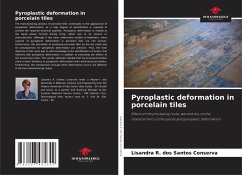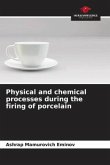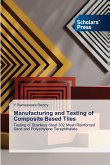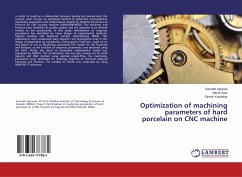The manufacturing process of porcelain tiles contributes to the appearance of pyroplastic deformation, as a high degree of densification is required to achieve the required technical qualities. Pyroplastic deformation is related to the liquid phase formed during firing, either due to its volume or characteristics. Although it has been extensively studied in tableware, many aspects of pyroplastic deformation in porcelain tiles are still unclear. Furthermore, the possibility of producing porcelain tiles by the dry route and its consequences for pyroplastic deformation are unknown. Thus, the main objective of this work was to add knowledge to the identification of factors that interfere with pyroplastic deformation, in addition to evaluating the effects of the processing route. The results obtained indicate that dry-processed bodies show a lower tendency to pyroplastic deformation than wet-processed bodies. Furthermore, the mechanisms through which deformation occurs are different in the two manufacturing routes.
Bitte wählen Sie Ihr Anliegen aus.
Rechnungen
Retourenschein anfordern
Bestellstatus
Storno








